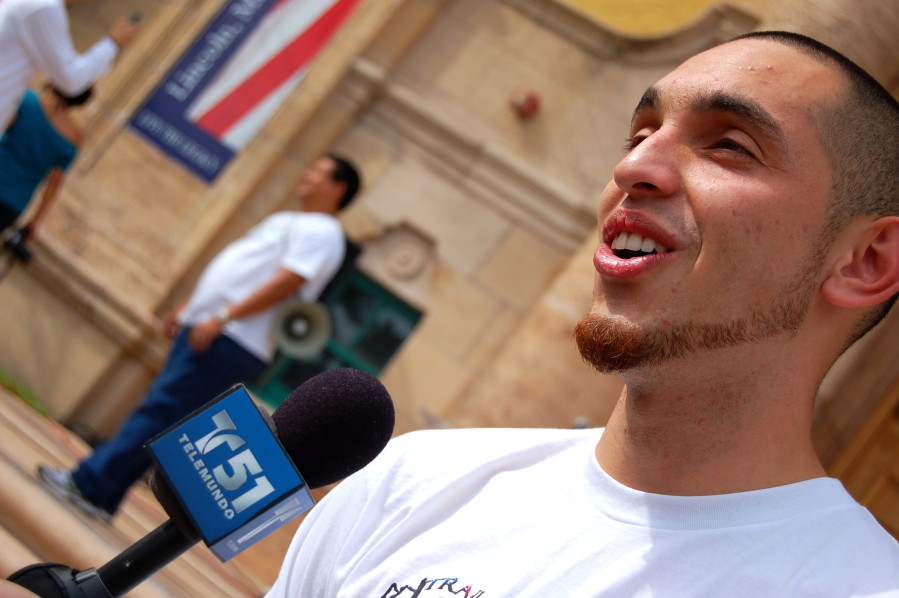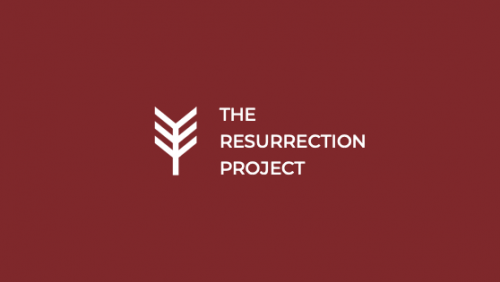From La Casa to Your Casa: From Miami to Chicago: A DACA student’s journey to success

At 26 years old, La Casa student Carlos is currently a third-year Architecture student at the Illinois Institute of Technology (IIT). But his path in getting here has been an amazing journey that included a 1500-mile walk.
Like many Latino students, Carlos immigrated to this country with his family in search of a better life. Born in Caracas, Venezuela, Carlos came to this country at the age of two. His father, who was already in New York, tried to become a permanent resident but could not. Nonetheless, he brought Carlos, his two daughters, and wife to New York to give them a better chance for an education. Carlos and his family moved to Miami in 1993.
From a young age, Carlos knew he and his family were undocumented. He saw the constant struggles his older sister faced. She couldn’t get a driver’s license, and she couldn’t apply for college; her undocumented status meant she had to pay out-of-state tuition. She was frustrated with not being able to get into college and eventually gave up on her collegiate dreams.
High school was a depressing period for Carlos. He felt isolated, saw no point in getting good grades, and didn’t feel he had any positive influences. Seeing how his sister’s future turned out, Carlos was not very motivated in high school, and he didn’t know anything about the college application process. He contemplated joining the military to learn engineering, but couldn’t as an undocumented immigrant. After graduating high school, Carlos instead started working in a warehouse six days a week for minimum wage.
In March 2006, Carlos’ mother lost her 12-year battle with breast cancer. A month later, Carlos and his family got evicted from their home. “This year was just a mess,” Carlos says. “Our lives were complete chaos. Although my mom was sick she was still a pillar for our family, so when she passed away the whole deck of cards crumbled.”
The loss, though, gave him a new motivation in life: he wanted to one day be on the board of trustees for the hospital in Miami where his mom had received treatment. With this new focus, Carlos landed a construction job where he got to work with floor plans and finally get a taste of the career he’d eventually pursue. However, Carlos lost his job when the real estate market crashed a year later. With limited opportunities as an undocumented immigrant and seeing the national debate on immigration, Carlos decided to get involved. “There was something wrong with having an immigration debate where the voice of undocumented people was absent,” he says.
With limited opportunities as an undocumented immigrant and seeing the national debate on immigration, Carlos decided to get involved. “There was something wrong with having an immigration debate where the voice of undocumented people was absent,” he says.
He decided he would start sharing his story with the world. He wrote a letter retelling his story and sent it to legislators, the White House, and media outlets.
“I got a lot of replies,” he says, “but one person that was really intrigued was Julia Preston of the New York Times.”
She was interested in hearing Carlos’ story because she was about to write an article on the DREAM Act. In November, Preston published an article retelling Carlos’s story and how he had planned to join the military but couldn’t because of his legal status.
In 2010, Carlos was one of four undocumented youths who walked from Miami to Washington DC to support deferred action for undocumented students. The walk was a catalyst for undocumented students to be heard. “This walk played a role for us having DACA now,” he says. “If it wasn’t for DACA, I would probably not be here now. DACA is a huge relief and normalizes my life. The undocumented student movement did this, and I’m happy to be a part of it.”
Carlos also joined a student group called Students Work for Equal Rights (SWER). There, he met other students who were in the same situation: undocumented but wanting to go to college. To his surprise, many of them were actually going to college and paying for it while being undocumented. He spoke to an admissions counselor named Maggie who worked with SWER. It was Maggie who told him that he could still go to college even if he didn’t have good grades in high school. She told him that there was help for students like him.
Following her advice, Carlos finally applied to a community college in 2009. He started with one class: history of architecture. After finishing it, he decided to apply to universities. Among his top choices were Cornell, Rhode Island School of Design, Syerk, and IIT. He eventually chose IIT.
He liked the fact that IIT had a strong reputation, that there were more Latinos in Chicago, and that it was a progressive city where architecture had a strong presence. Carlos was also amazed to learn that IIT had a Coordinator for Undocumented Students at their Office of Provost. The coordinator at IIT, Tania Cabrera, told Carlos of La Casa, a place where other students like him were pursuing their degrees. She connected him to Maria Bucio, Director of La Casa. Months later, Carlos was given a partial scholarship for La Casa and moved here. Now, he’s actively pursuing his degree in architecture.
One of the main reasons Carlos is studying architecture is because only 2% of Latinos are architects; many Latinos are not getting their licenses after graduating. Just as he did with DACA, Carlos wants to be part of the change and get his license. He also believes it is important that more Latinos go into fields such as the arts, sciences, and engineering.
When asked where he sees himself in ten years, he answered, “ I would like to be practicing architecture and urban planning. But I also want to be involved politically and developing community-based projects such as La Casa. I would really love to replicate these types of projects nationwide in cities like Los Angeles and Miami.”
For Carlos, his mom continues to be an inspiration. “Through example I can say that determination is perhaps the most important thing an individual can hold. My mom’s determination towards us and specially towards seeing my little sister grow up was immense. She lived for 12 years of my sister’s life. My mom shouldn’t have lived that long, but she kept beating the odds year after year even when doctors didn’t think she could. If your determination is greater than your end goal, this supersedes anything that is happening in the present moment.”
Claudia Martinez is a La Casa student who is interning with TRP. From La Casa to Your Casa is her inside glimpse of life at La Casa, and will feature interviews with students and other La Casa news.

